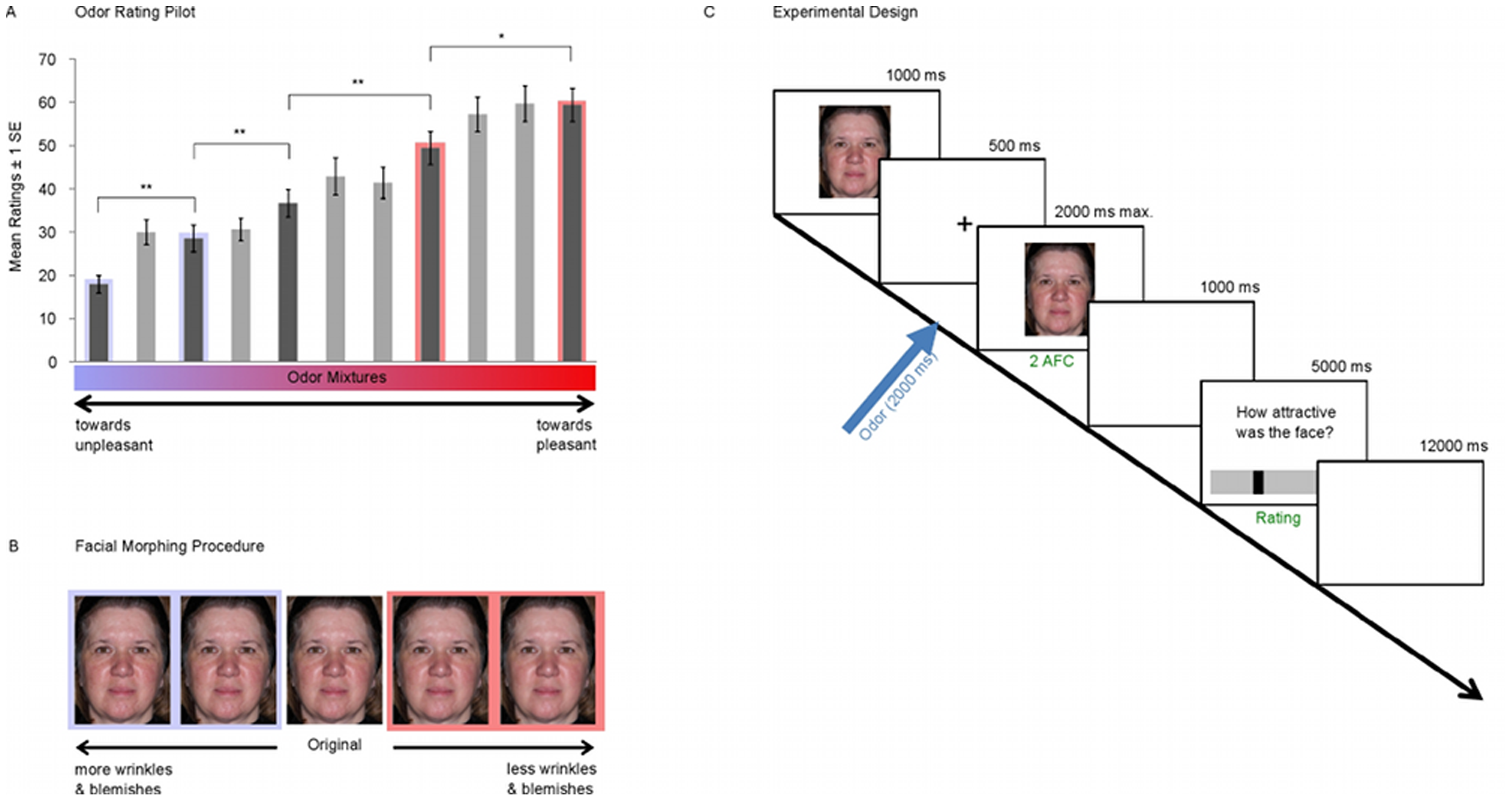Want to be sexier? Ask your next potential boyfriend to meet you in a bakery.
Perfumes and scented products have been used for centuries as a way to enhance overall personal appearance and studies have shown that perception of facial attractiveness could be influenced when using unpleasant vs. pleasant odors - but it was not known whether odors influence the actual visual perception of facial features or alternatively, how faces are emotionally evaluated by the brain.
A recent small study concluded that women's faces are rated as more attractive in the presence of pleasant odors. In contrast, odor pleasantness had less effect on the evaluation of age. The findings suggest that the use of scented products such as perfumes may, to some extent, alter how people perceive one another.

A. Results of odor pilot study. Valence ratings were acquired for 11 stepwise mixtures between 100% fish odor (unpleasant) and 100% Rose odor (pleasant). Five odors were chosen which perceptually corresponded to equidistant linearly increasing valence percepts (dark grey bars). All five odors were significantly different from each other (*: p<.05, **: p<.01). Red box indicates odors which were grouped together as “more pleasant” in the factorial analysis, blue box indicates odors which were grouped together as “more unpleasant”. B. Illustration of facial morphing procedure. The middle picture illustrates the original image; pictures framed by blue box illustrate increasing features (grouped together for factorial analysis), while pictures in the red box illustrate increasing features. C. Experimental Design.
doi:10.1371/journal.pone.0098347
"Odor pleasantness and facial attractiveness integrate into one joint emotional evaluation," said lead author Janina Seubert, PhD. "This may indicate a common site of neural processing in the brain."
The study centered on the principle that judging attractiveness and age involve two distinct perceptual processing methods: attractiveness is regarded as an emotional process while judgments of age are believed to be cognitive, or rationally-based.
In the study, 18 young adults, 12 female, were asked to rate the attractiveness and age of eight female faces, presented as photographs. The images varied in terms of natural aging features.
While evaluating the images, one of five odors was simultaneously released. These were a blend of fish oil (unpleasant) and rose oil (pleasant) that ranged from predominantly fish oil to predominantly rose oil. The subjects were asked to rate the age of the face in the photograph, the attractiveness of the face and the pleasantness of the odor.
Across the range of odors, odor pleasantness directly influenced ratings of facial attractiveness. This suggests that olfactory and visual cues independently influence judgments of facial attractiveness.
With regard to the cognitive task of age evaluation, visual age cues (more wrinkles and blemishes) were linked to older age perception.
However, odor pleasantness had a mixed effect. Visual age cues strongly influenced age perception during pleasant odor stimulation, making older faces look older and younger faces look younger. This effect was weakened in the presence of unpleasant odors, so that younger and older faces were perceived to be more similar in age.
Jean-Marc Dessirier, Lead Scientist at Unilever and a co-author on the study said, "These findings have fascinating implications in terms of how pleasant smells may help enhance natural appearance within social settings. The next step will be to see if the findings extend to evaluation of male facial attractiveness."






Comments